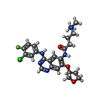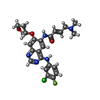Entry Database : PDB / ID : 4g5jTitle Crystal structure of EGFR kinase in complex with BIBW2992 Epidermal growth factor receptor Keywords / / Function / homology Function Domain/homology Component
/ / / / / / / / / / / / / / / / / / / / / / / / / / / / / / / / / / / / / / / / / / / / / / / / / / / / / / / / / / / / / / / / / / / / / / / / / / / / / / / / / / / / / / / / / / / / / / / / / / / / / / / / / / / / / / / / / / / / / / / / / / / / / / / / / / / / / / / / / / / / / / / / / / / / / Biological species Homo sapiens (human)Method / / Resolution : 2.8 Å Authors Solca, F. / Dahl, G. / Zoephel, A. / Bader, G. / Sanderson, M. / Klein, C. / Kraemer, O. / Himmelsbach, F. / Haaksma, E. / Adolf, G.R. Journal : J.Pharmacol.Exp.Ther. / Year : 2012Title : Target Binding Properties and Cellular Activity of Afatinib (BIBW 2992), an Irreversible ErbB Family Blocker.Authors : Solca, F. / Dahl, G. / Zoephel, A. / Bader, G. / Sanderson, M. / Klein, C. / Kraemer, O. / Himmelsbach, F. / Haaksma, E. / Adolf, G.R. History Deposition Jul 18, 2012 Deposition site / Processing site Revision 1.0 Aug 29, 2012 Provider / Type Revision 1.1 Oct 31, 2012 Group Revision 1.2 Nov 6, 2024 Group Data collection / Database references ... Data collection / Database references / Derived calculations / Structure summary Category chem_comp_atom / chem_comp_bond ... chem_comp_atom / chem_comp_bond / database_2 / pdbx_entry_details / pdbx_modification_feature / struct_conn / struct_site Item _database_2.pdbx_DOI / _database_2.pdbx_database_accession ... _database_2.pdbx_DOI / _database_2.pdbx_database_accession / _struct_conn.pdbx_leaving_atom_flag / _struct_site.pdbx_auth_asym_id / _struct_site.pdbx_auth_comp_id / _struct_site.pdbx_auth_seq_id
Show all Show less
 Open data
Open data Basic information
Basic information Components
Components Keywords
Keywords Function and homology information
Function and homology information Homo sapiens (human)
Homo sapiens (human) X-RAY DIFFRACTION /
X-RAY DIFFRACTION /  SYNCHROTRON / Resolution: 2.8 Å
SYNCHROTRON / Resolution: 2.8 Å  Authors
Authors Citation
Citation Journal: J.Pharmacol.Exp.Ther. / Year: 2012
Journal: J.Pharmacol.Exp.Ther. / Year: 2012 Structure visualization
Structure visualization Molmil
Molmil Jmol/JSmol
Jmol/JSmol Downloads & links
Downloads & links Download
Download 4g5j.cif.gz
4g5j.cif.gz PDBx/mmCIF format
PDBx/mmCIF format pdb4g5j.ent.gz
pdb4g5j.ent.gz PDB format
PDB format 4g5j.json.gz
4g5j.json.gz PDBx/mmJSON format
PDBx/mmJSON format Other downloads
Other downloads 4g5j_validation.pdf.gz
4g5j_validation.pdf.gz wwPDB validaton report
wwPDB validaton report 4g5j_full_validation.pdf.gz
4g5j_full_validation.pdf.gz 4g5j_validation.xml.gz
4g5j_validation.xml.gz 4g5j_validation.cif.gz
4g5j_validation.cif.gz https://data.pdbj.org/pub/pdb/validation_reports/g5/4g5j
https://data.pdbj.org/pub/pdb/validation_reports/g5/4g5j ftp://data.pdbj.org/pub/pdb/validation_reports/g5/4g5j
ftp://data.pdbj.org/pub/pdb/validation_reports/g5/4g5j Links
Links Assembly
Assembly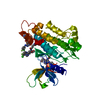
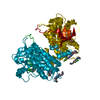
 Components
Components Homo sapiens (human)
Homo sapiens (human) X-RAY DIFFRACTION / Number of used crystals: 1
X-RAY DIFFRACTION / Number of used crystals: 1  Sample preparation
Sample preparation SYNCHROTRON / Site:
SYNCHROTRON / Site:  SLS
SLS  / Beamline: X06SA / Wavelength: 0.9999 / Wavelength: 1 Å
/ Beamline: X06SA / Wavelength: 0.9999 / Wavelength: 1 Å Processing
Processing Movie
Movie Controller
Controller



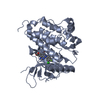
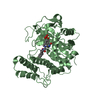
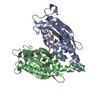
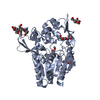
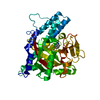
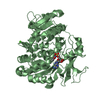
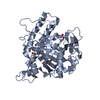
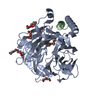
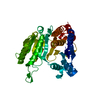
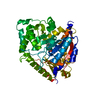
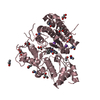
 PDBj
PDBj












